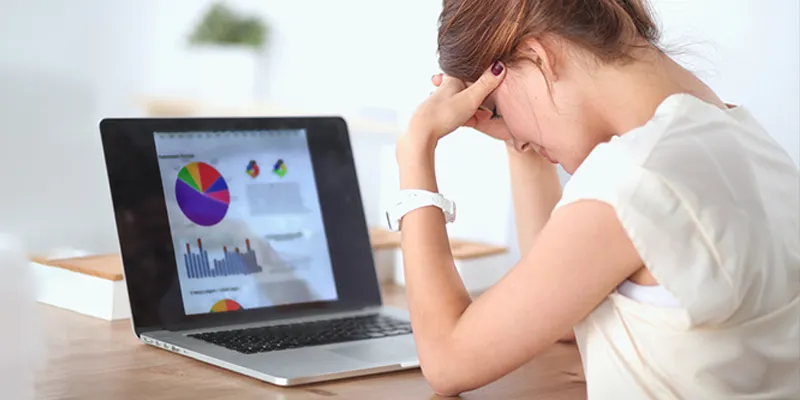Is ‘sitting’ coming in the way of your health and success?
Think about it. Do you sit for the better part of the day, both at work and at home? Do you hunch over your computer or phone for hours on end? New research shows that it is more harmful than it looks. Not sure why sitting is the new disease of our times? Read on…
A couple of decades ago, all jobs were strenuous and physically demanding but today, most of us spend our days sitting, stooped over our computers and phones. Professionals in Mumbai, India’s business capital, in fact, work the longest hours, clocking more than 10 hours a day. Spin the fact around and you know that it is 10 hours of mental work but also 10 hours of physical inactivity.

Employees should find innovative ways to move or stand at the office
Why you must stand up
Chances are that you’re sitting as you read this and perhaps, you don’t think sitting is harmful for your health or success. The truth is, it is. It is a silent, slow killer and can be compared to smoking.
The science behind this is simple: Our bodies are designed to move, they’re not made for the sedentary lifestyle we now lead. So every time you’re sitting, your body secretly is waiting to go for a walk. And it’s for good reason because movement ensures proper blood circulation and corrects the curved back, slouching shoulder posture that we inadvertently develop when we sit to work on our computers.
This is problematic because the hunched shape puts uneven pressure on the spine and also shrinks your chest cavity. Besides, fat is not burnt half as fast when you’re sitting as it is when you move.
However, our jobs today demand that we sit. Therefore urban areas around the world are showing a decline in physical activity largely because of its absence in our occupation. This means that much of our physical activity requirements have to come through our leisure time pursuits. Unfortunately, numerous studies like the ICMR-INDIAB study have found that a large percentage of people in India are inactive with fewer than 10% engaging in recreational physical activity. A direct consequence of this is the explosive increase in the prevalence of type 2 diabetes and cardiovascular diseases in the country.

A sedentary lifestyle can lead to infinite problems
The health impact of a sedentary lifestyle is so alarming that our immediate response is to deny that sitting can cause such life-threatening diseases. We also tend to ignore what may not be immediately visible but what if I were to tell you that sitting not only impacts our body but also our brain and therefore our productivity?
Sitting and its impact on the brain
You’re thinking: But one has to sit down to use their brains, right? Wrong. Sitting doesn’t help the brain much either: It’s simple, the brain requires blood flow and oxygen to stay alert which is compromised when you sit. For example, researchers at New Mexico Highlands University demonstrated that foot impact during walking increases brain blood flow. The contrary is also true: Sitting for long periods reduces the blood flow. This reduced blood flow to the brain is what leads to diseases like Alzheimer's. Some other studies, although inconclusively, also suggest an association between higher sitting time and impaired brain function. More research might be required but there’s a high chance that our sedentary lifestyle in the long-run impacts the very organ that we use the most.
Empirical evidence also suggests that sitting for a long time can result in sluggishness and lack of motivation which directly impacts our ability to be creative, resourceful, problem-solvers, and productive. It’s quite evident that our bodies are meant for movement, not stillness.
How much movement do we need?
The World Health Organisation recommends that individuals perform at least 150 minutes of moderate to vigorous physical activity per week for the maintenance of health. In India, at the moment, most of us don’t meet this requirement. But thankfully, there are ways to combat this dangerous but preventable sitting epidemic.
Take a stand
You can train your mind to do everything you’re doing sitting down, standing up. If you’re someone who uses their phone during work hours, don’t get up when you get a call, get up every time you get a notification. Pace around your office or use your phone while you stand. And if it doesn’t look like you’ll remember to stand every half an hour, use the same phone and set alarms. It might also make sense to walk over to your team member and talk rather than sending her an email. Hold standing meetings. Finally, the best way to ensure that you stop sitting eight hours every day is to get a standing desk.
Standing desks are not, as it is widely believed, a new trend but have been present for over a hundred years. In fact, Thomas Jefferson, Charles Dickens, Ernest Hemingway, and Vladimir Nabokov were some of the many writers who used them and wrote standing up.
Exercise

Running or walking should be an important part of your day
Second, be as physically active as possible. This means hit the gym, walk, run, do yoga or any form of exercise that can get your heart pumping. Exercise is known to enhance the creation of new neurons, reduce plasticity, inflammation and other damages that a sedentary lifestyle might inflict upon us.
And finally, if you must sit, sit straight
Your school teacher was right. No one likes the sloucher.
While it’s important that you stand and move as much as possible, it’s equally imperative to correct your sitting posture. When sitting, your feet should be flat on the floor and at some distance from each other. The height of your chair should allow your thighs to angle down slightly. And what’s most crucial is that your spine should be straight and your elbows should have maximum support while typing.
The health consequences of sitting for long hours might be alarming but there are numerous opportunities in the day to reduce your sitting time and therefore, much potential to have a positive impact on health.
(This article is from Thrive Global)







